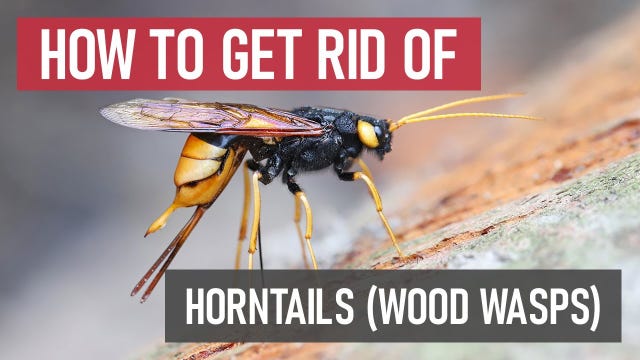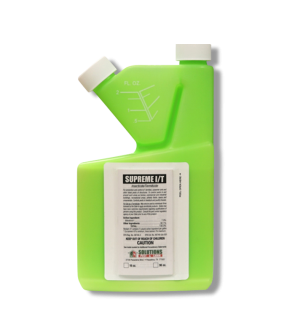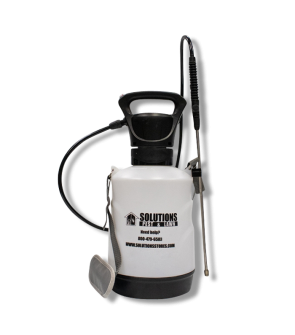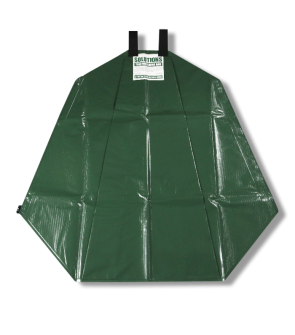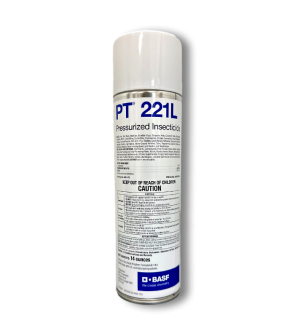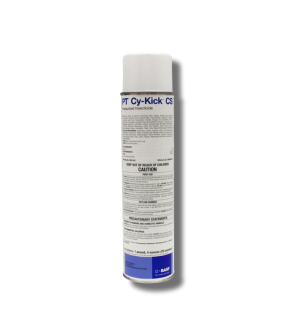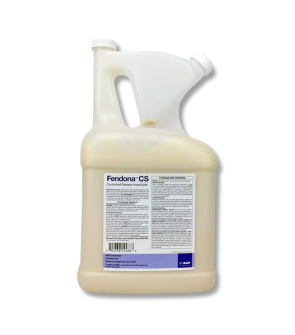Gain access to personalized product screening, the best pricing, rewards, and more!
Most Effective Products
Horntail Control: How to Get Rid of Horntails
This page is a horntail control guide. By using the products and methods suggested, you will get control of your horntails. Follow this guide and use the recommended products, and we guarantee 100% control over horntails.
Many types of insects can cause holes in trees and fences. One particularly interesting type of wasp is horntails, also called wood wasps. Although these pests resemble wasps in appearance and fall under this class of insect, they are actually a type of massive sawfly.
They achieve their name because of the horny-spear-like structure at the end of their abdomen. Despite this formidable appendage, horntails do not sting or bite. The biggest issue surrounding horntails is their tendency to burrow into wood, which potentially causes unsightly damage to the wood of homes, trees, and fences.
While most pests' damage can be noticed instantly, this is not the case with horntails. Typically, damages are not seen until the larvae are well-developed and eat through the wood. Follow along with this DIY guide to learn how to get rid of horntails and prevent them from further damaging your property with the recommended products.
Identification
Before proceeding with treatment, you must be sure the sawfly invading your property is a horntail. Misidentification can lead you to use the wrong insecticides, wasting time and money. There are several species of horntails, so we will focus on general characteristics:

- Adult horntails are medium to large-sized wasps, 1.5 inches long, with pale to dark-colored wings, and can be separated from common wasps by their thick waists.
- Depending on the species, they are colored black, blue, or reddish brown and have red, ivory, yellow, or orange markings.
- Both male and female horntails possess a short, horn-like structure at the end of their cylindrical body, which is often confused for a stinger. The female has a long, stinger-like tail that is her ovipositor for laying eggs under the surface of wood.
- Larvae are white, legless grubs similar to bark beetle larvae in appearance, except their body shape is more elongated, and they have a small spine at the end of the body.
Use the image and description above to help you identify horntails. If unsure, email or in-person at one of our store locations a photo of your pest so we can correctly identify it. You may also reach out by phone for a proper treatment plan.
Inspection
After properly identifying the horntails on your property, you can proceed with the inspection. During this phase, you are looking for areas where the pest is frequenting and other conditions that allow it to thrive.

Where to Inspect
Horntails commonly infest decaying, dying, or fallen trees. Depending on the species, they prefer to lay eggs in either hardwood, softwood, or coniferous trees.
Timber salvaged and processed from these infested sites can result in adult horntails emerging in recently built structures like homes and fences.
What to Look For
When a female horntail is ready to lay her eggs, she will drill down into the wood with her ovipositor until an acceptable depth is reached. During this egg-laying process, the female will release fungal spores to help soften the wood for the larvae to feed upon.
After 3 to 4 weeks, the eggs hatch and tunnel under the wood, creating 1-2 feet long galleries filled with fine sawdust. Adult horntails emerge between 1 and 3 years after egg laying, often making them difficult to control.
Holes on the wooden surface are signs of older horntail larvae. After emerging, the adults leave behind round, clean-cut holes from where they exited. Their exit holes are typically 1/4 to 1/2 of an inch in diameter.
Within a year or more after a home's construction, horntails are known for their ability to chew through plaster or sheetrock walls to emerge.
Treatment
There is no practical way to determine if horntails are present in wood until the damage has already occurred. However, they will likely have happened anywhere infested timber was used for construction.
The best approach to this type of pest infestation is to apply a residual insecticide to eliminate any emerging adult horntails and repair previously infested sites.
Step 1: Repair Wood
 Horntails will not reinfest previous sites, and their larvae can take years to develop, causing serious cosmetic damage to wooden structures.
Horntails will not reinfest previous sites, and their larvae can take years to develop, causing serious cosmetic damage to wooden structures.
When this occurs, parts of the wood where exit holes are noticed, or the wood has become weakened should be replaced. These minor cosmetic damages can lead to greater structural damage if left unchecked.
Typically, if no exit holes or galleries are noticed on the wood's surface, you can catch the infestation early enough. Be aware, though, that the wood surrounding these sites may also have to be replaced.
Trees or wooden fences showing signs of holes, galleries, or white rot decay a fungal disease caused by this pest will also need to be treated.
For trees, we recommend pruning damaged stems and foliage. In more severe infestations, the tree will need to be removed entirely and properly disposed of.
Step 2: Spray Residual Insecticide

Supreme IT is a broad-spectrum insecticide that treats over 70 types of pests, including wasps. Once dried, it creates a 90-day residual barrier that kills horntails on contact after they emerge from exit holes and repels them away from treated sites.
Determine how much Supreme IT to use by measuring the square footage of the treatment area. To do this, measure the length and width of the treatment area in feet, then multiply them together (length X width = square footage).
To get rid of wasps in fences and trees, you will need to use a 0.06% dilution. To do this, mix 1 fl. oz. of Supreme IT with 1 gallon of water in a handheld pump sprayer.
To perform a perimeter application, apply 1 fl. oz. of product in 1 gallon of water per 1,000 sq. ft.
Mix the product using a handheld pump sprayer, fill it with half the water and add the measured amount of Supreme IT. Pour in the remaining half of the water and close the lid to the sprayer. Shake the solution until it is well-mixed, then pump several times before spraying.
Spray the cracks, crevices, and holes in fences where wasps may nest to the point of runoff. Treat these openings until well-saturated and contact as many horntails as you see in your line of sight.
For trees, spray the Supreme IT solution up the tree trunk until the bark is wet. Any other openings you see in the tree and any exit holes from horntails should be treated as well.
To make perimeter applications around structures, spray 3 feet up the walls and 3 feet out from the foundation. Be sure to spray around the foundation of the window and door frames, eaves, and other cracks and crevices.
Keep children and pets away from treated areas until the treated area has dried completely.
Step 3: Seal the Holes

Sealing the holes will help prevent horntails from entering or exiting the wood.
Prevention
After horntails have been eliminated from your property, you will want to ensure they do not return. Below are some preventative measures to follow to decrease the likelihood of horntails returning to your yard.
- As horntails mainly target unhealthy trees, the first thing to do is to keep up with regular pruning of overgrown and damaged trees. Remove severely damaged trees, fences, or wooden parts of your home if needed. Parts of your fence or home that can be repaired should be done.
- Keep firewood stored outside, away from your home's foundation. This will help prevent interior infestations. If you have freshly cut trees, you should quickly process them into firewood to prevent infestation.
- Maintain the health of your trees further by keeping up with watering. We recommend using the Solutions Tree Watering Bag for newly planted or established trees that are 1-8 inches in trunk diameter. For smaller trees, we recommend using the Solutions Tree Watering Rings. These products will provide the proper amount of water to trees and avoid over-watering. For either product being used, securely attach the products around the tree trunk, then fill it with the appropriate amount of water.
- Considering that horntails take years to emerge from wooden sites, it would be best to keep up with quarterly applications of Supreme IT. Treat trees, wooden fences, the entire perimeter of your home, and exterior wooden parts of your home every 90 days. For perimeter applications around structures, use 1 fl. oz. of Supreme IT in 1 gallon of water per 1,000 sq. ft. Spray 3 feet up the structure foundation and 3 feet out. You will also need to treat other entry points, such as around window and door frames, eaves, soffits, and other openings along the wall. For fences and trees, mix 1 fl. oz. of product with 1 gallon of water. Treat any openings in these areas until completely wet, and be sure to saturate the entire trunk of trees.
Key Takeaways
What Are Horntails?
- Horntails are a type of wasp that resembles a large sawfly whose larvae are wood borers in wooden sites.
How to Get Rid of Horntails
- The first thing to do against horntails is to remove infested wood where the infestation was witnessed. Use a residual insecticide like Supreme IT after all wood with holes or visible signs of horntails occurs. Find and seal all openings where this pest has exited the wood with wood putty or caulk.
Preventing Horntails Reinfestation
- Considering that horntails are attracted to decaying wood, removing and replacing wooden sites with signs of previous activity is the best course of action. If the infestation is severe or the wooden site is severely damaged, you may need to remove it from your property altogether. Applying Supreme IT every 90 days will help deter any traveling horntails and kill those that exit the wood.






